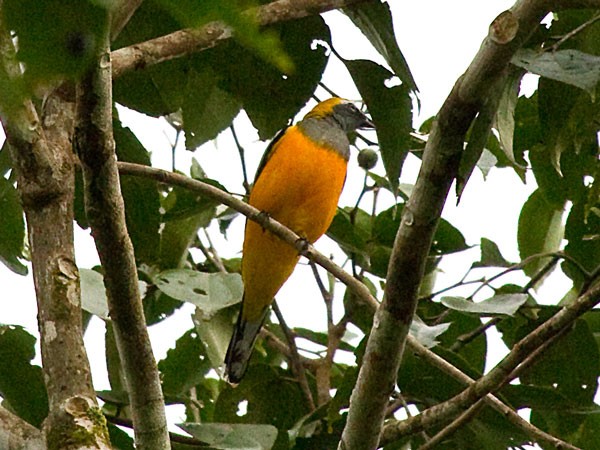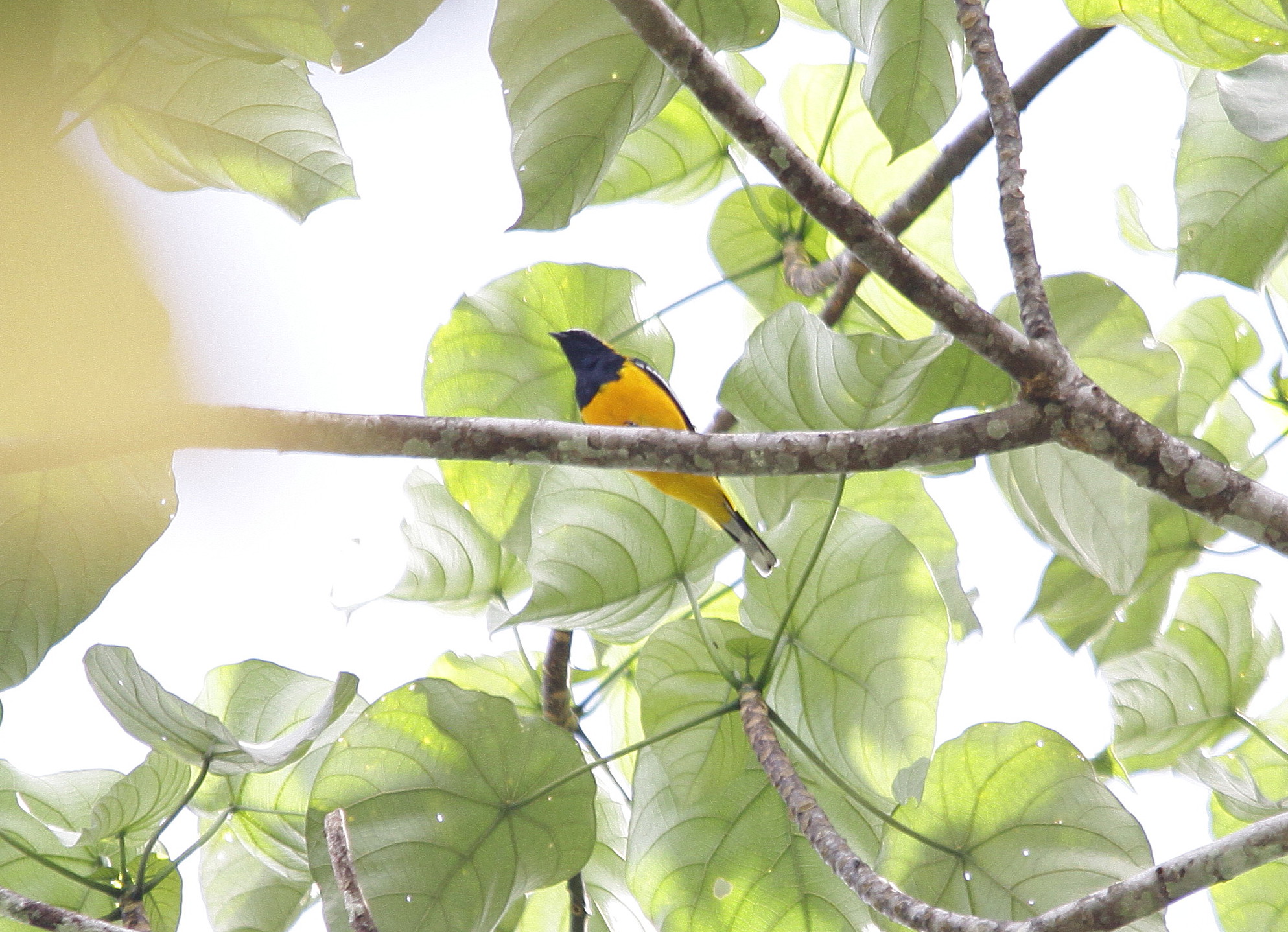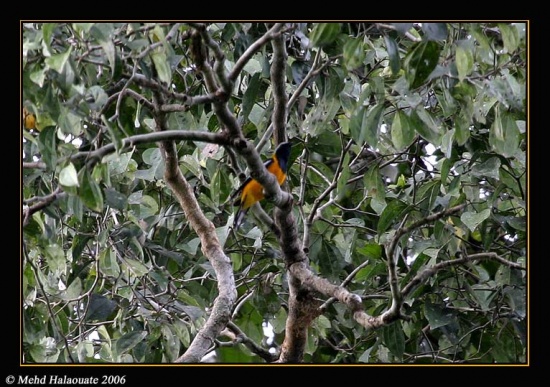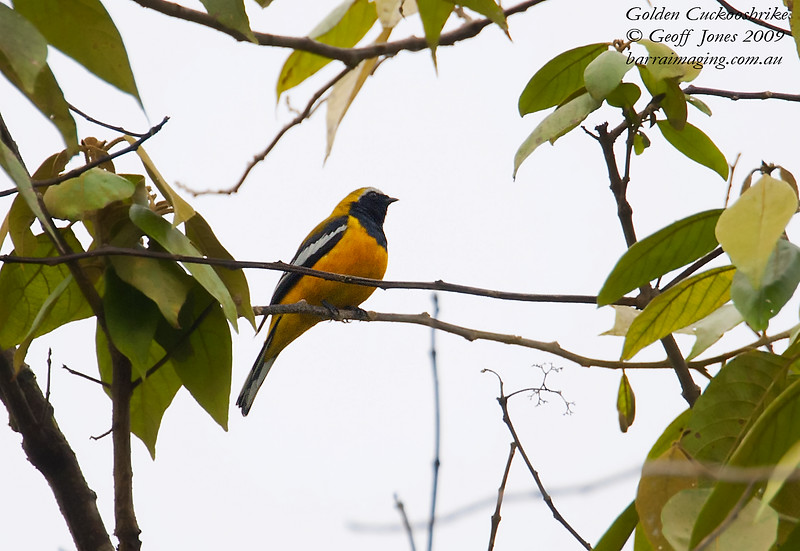
Campochaera sloetii
TAXONOMY
Campephaga sloetii Schlegel, 1866, New Guinea. Two subspecies.
OTHER COMMON NAMES
English: Golden triller; French: Echenilleur dorй; German:
Goldraupenfresser; Spanish: Oruguero Anaranjado.
PHYSICAL CHARACTERISTICS
7.9 in (20 cm); 1.3–1.6 oz (36–46 g). Grayish white forehead
and browline with olive-gray crown. Neck to uppertail-coverts
are orange-yellow, as is the abdomen. Black wings with two
white stripes; throat and upper breast black.
DISTRIBUTION
C. s. sloetii: Arfak Mountains (foothills) and north New Guinea
lowlands east to Wewak area. C. s. flaviceps: South New Guinea
lowlands from Mimika River east to Port Moresby area.
HABITAT
Tall tree canopy of forest interior and edge.
BEHAVIOR
Occurs in pairs or small parties. Active and noisy, with musical,
high-pitched whistling calls. Duetting displays are recorded.
FEEDING ECOLOGY AND DIET
Eats fruit; reports of feeding on insects are unconfirmed.
REPRODUCTIVE BIOLOGY
Unknown; it is thought to breed during the rainy season
(November–March).
CONSERVATION STATUS
Not threatened. The known
DISTRIBUTION
is rather patchy but
the species was formerly regarded as not uncommon locally.
SIGNIFICANCE TO HUMANS
None known.
Other popular Animals
Photo Gallery of - Golden cuckoo-shrike




 Animalia Life
Animalia Life